Last Updated: 02/09/2025
Pregnant Cat Guide
Is your cat expecting? Our vet-written guide walks you through every stage of cat pregnancy. We cover essential nutrition, identifying early signs, using safe parasite prevention, what to expect during labour, and how to spot potential complications. Be prepared for a healthy mother and kittens.
Author: Dr Carla Paszkowski BVSc (Hons)
Reading Time: 11 minutes - short read
The prospect of new kittens brings a unique mix of excitement and responsibility for any cat owner. Supporting your pregnant cat, or 'queen', through this journey is crucial for her health and the wellbeing of her litter. From the first subtle signs of pregnancy to the day the kittens are born, her body undergoes incredible changes that require special care and attention.
This journey doesn't end at birth; it continues through the vital periods of lactation and weaning. This comprehensive guide will walk you through the specifics of pregnancy in cats, and problems you might encounter during lactation - providing you with the essential knowledge and practical advice needed to ensure a safe, healthy, and positive experience for both mother and kittens.
Facts about pregnancy in cats
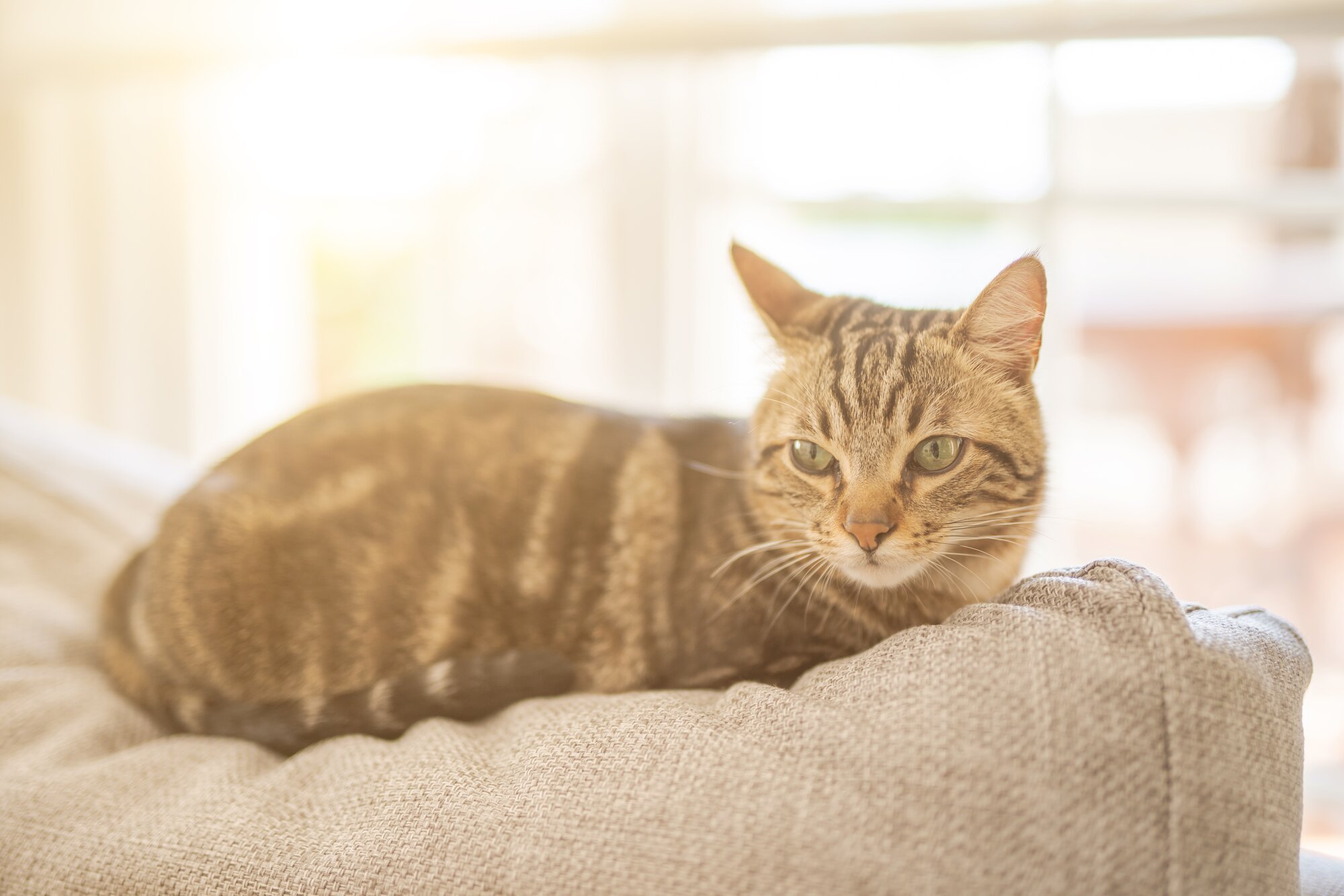
Reproductive Cycle of the Cat
The reproductive cycle of the cat isn't the same as that of a human. Unlike humans, cats don't don't menstruate - and they don't ovulate unless they are mated. Instead, undesexed female cats usually experience a 'heat' in which they become reproductively active several times per year from spring to autumn. Their first heat may occur as early as 4 or 5 months of age if daylight length is favourable.
Cats are designed to give birth only during warmer months, and generally become reproductively active when the days are longest. Indoor cats may be sheltered from light cycles and may not cycle as often as outdoor cats. Cats will often stay on heat until a mating occurs, or the days begin to shorten.
How long are cats pregnant for?
Pregnancy in cats lasts for around 63 days, or 9 weeks. Whelping (giving birth) occurs 59-65 days after a successful mating.
How can I tell if my cat is on heat?
When a queen is 'on heat', she may be restless, vocal, extra smoochy, mark urine in the house, and try to escape your house in search of a mate. She may lift her bottom a lot and enjoy rump scratches a lot more than usual.
Did you know: Female cats often mate with multiple tom cats when they are on heat, and can fall pregnant to multiple toms. This means they can have one litter containing kittens who have different fathers! This has an evolutionary benefit as it adds healthy genetic diversity to the population.
Signs of Pregnancy in Cats
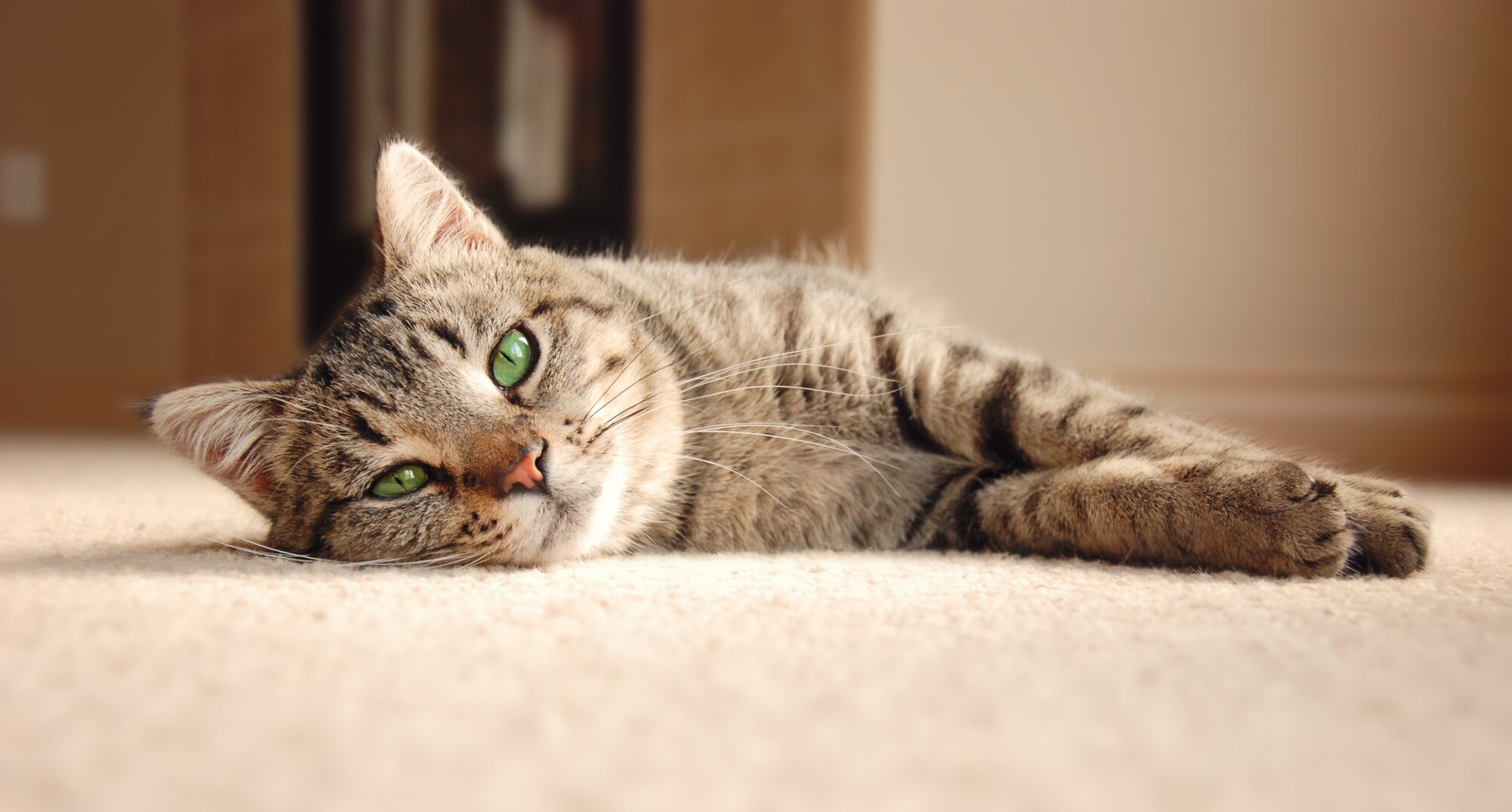
Unfortunately, there isn't an easy at-home urine test to diganose pregnancy in cats like there is for humans. In most cases, your female is likely to be pregnant after mating. To be sure, your vet can ultrasound your cat's abdomen from day 21-25 after mating - however most vets will be able to feel foetuses in the abdomen at around 28 days into the pregnancy.
Signs Your Cat is Pregnant
Early Signs: In the first couple of weeks, you may not notice any signs, except that your cat may stop eliciting the signs of heat. Nausea and vomiting (morning sickness) can occur in some cats.
After 2 weeks their nipples become swollen and red. Your cat also may experience 'morning sickness' and vomit occasionally.
Around 4 weeks into the pregnancy, your cat will start to gain weight noticeably. The abdomen will start to become larger. An experienced vet will be able to palpate the foetuses in the abdomen at this time.
In the final weeks (6-9 weeks) of the pregnancy, you may see behaviour changes. Your cat may appear uncomfortable with her swollen belly and seek affection from you. She may also sleep more and have an increased appetite.
How to tell how may kittens your pregnant cat is carrying
The only accurate way to assess how many kittens your cat will have is via ultrasound or xray at your vet. Your vet will also be able to perform an abdominal palaption, however this is not always accurate.
What to feed a pregnant cat
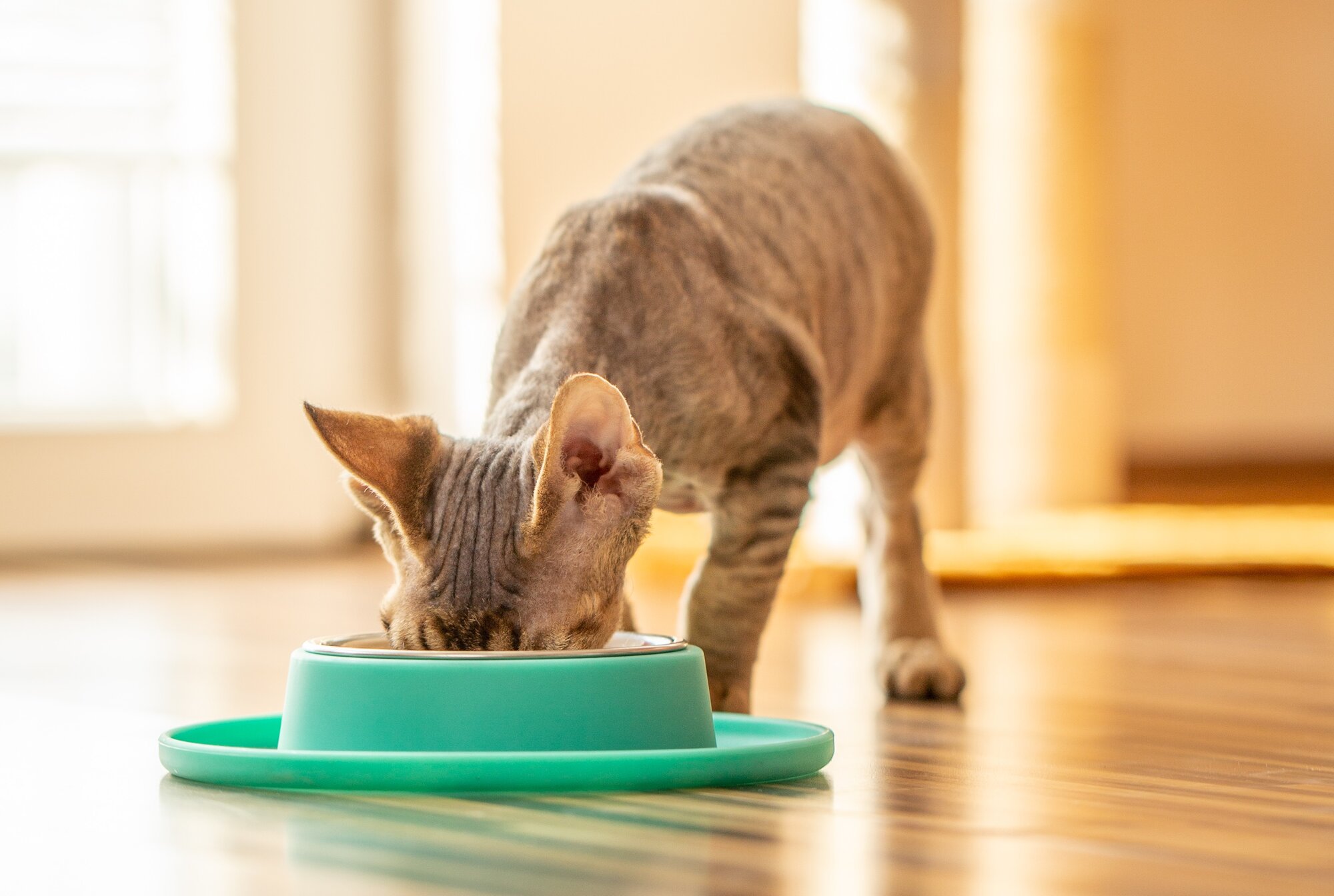
Proper nutrition is absolutely vital for cats during gestation. When a female cat is halfway through the pregnancy, her nutritional needs increase as the litter inside her grows at a rapid rate. She requires higher levels of energy, calcium, phosphorus, and vitamins.
Any premium food formulated for kittens is also complete and balanced for pregnant and lactating queens (unless labelled otherwise). A pregnant or lactating female has such similar nutritional requirements to young infant kittens, so you can feed a premium kitten food as it contains all the nutrients your gestating girl needs.
Feeding guidelines for pregnant cats:
- In the 1st half of the pregnancy (weeks 1-4), a pregnant cat can be maintained on a regular premium adult food. However, it is vital that she doesn't lose weight in this period. If your pregnant cat loses body condition, or is seeking more food than you're giving her, a transition onto a kitten food may be required sooner.
- In the 2nd half of the pregnancy (from 4 weeks onwards), a balanced kitten food is required - not just because her nutritional demands increase, but also because the kittens grow and take up more space in her abdomen so she may not tolerate as much food in her stomach and therefore require a much more nutritionally-concentrated diet. However, keep a close eye on her weight at this point. It's important to ensure your girl remains active, because obesity can cause birthing difficulties.
- After birth: during lactation, the mother cat's energy requirements will actually increase even more. In the 4 weeks after giving birth she may require 2-3 times the calories of a normal adult. Make sure she eats the same premium kitten food during this period, and consider offering some kitten milk and a little extra meat such as cooked chicken breast. Her energy requirement will reduce and return to normal by about 6 weeks after birth and once her kittens are weaned.
Vet picks for pregnant cat foods
Parasite Prevention During Pregnancy
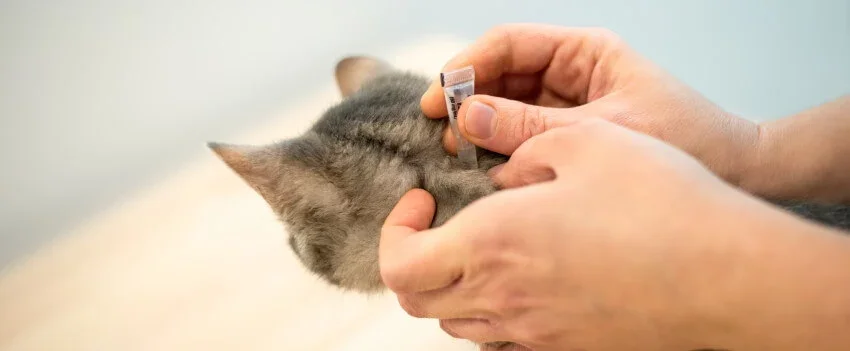
While all forms of parasite prevention are important for cats during pregnancy and lactation, worming is particularly vital due to the risk of infecting the kittens. Flea and tick prevention should remain as per usual throughout your cat's pregnancy - provided your chosen preventative is safe for pregnancy.
While most parasite preventatives are generally believed not to cause issues during pregnancy, only some have actually been tested to prove their safety. Therefore, we recommend only using products that have had their safety evaluated during pregnancy and lactation.
A broad wormer which covers all intestinal worms is recommended for a pregnant cat. Worms of concern include hookworm, roundworm, and tapeworm.
Worming guidelines for pregnant cats:
- Before mating, a female cat should receive her intestinal deworming as normal (for more information, read all about how often you should worm your cat.)
- During pregnancy, worming should be done every 3 weeks unless specified by your vet. It is vital you only use a wormer safe for pregnancy (see below).
- While nursing, the mother cat should be wormed every 3 weeks with a lactation-safe wormer and the kittens must be wormed at 2 weeks of age, then every fortnight until 12 weeks of age, then monthly ongoing.
Safe Parasite Preventatives for Pregnant Cats
Can a pregnant cat be vaccinated?
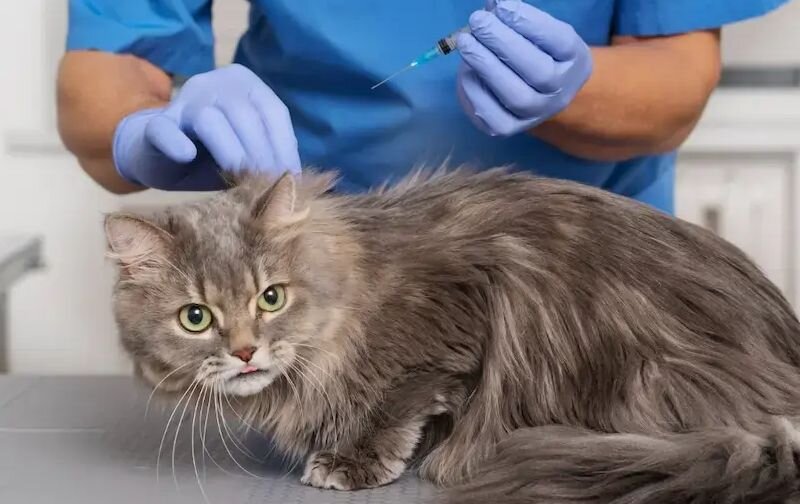
It is generally recommended to avoid vaccinating pregnant cats if possible. They should ideally be vaccinated before they become pregnant, to avoid any risk to the developing kittens.
If vaccination is deemed necessary during pregnancy, inactivated vaccines are recommended. Vaccines containing modified live viruses, can put a kitten at significant risk of birth defects.
For information about when to vaccinate newborn kittens, see our Complete New Kitten Guide.
What to expect during labour
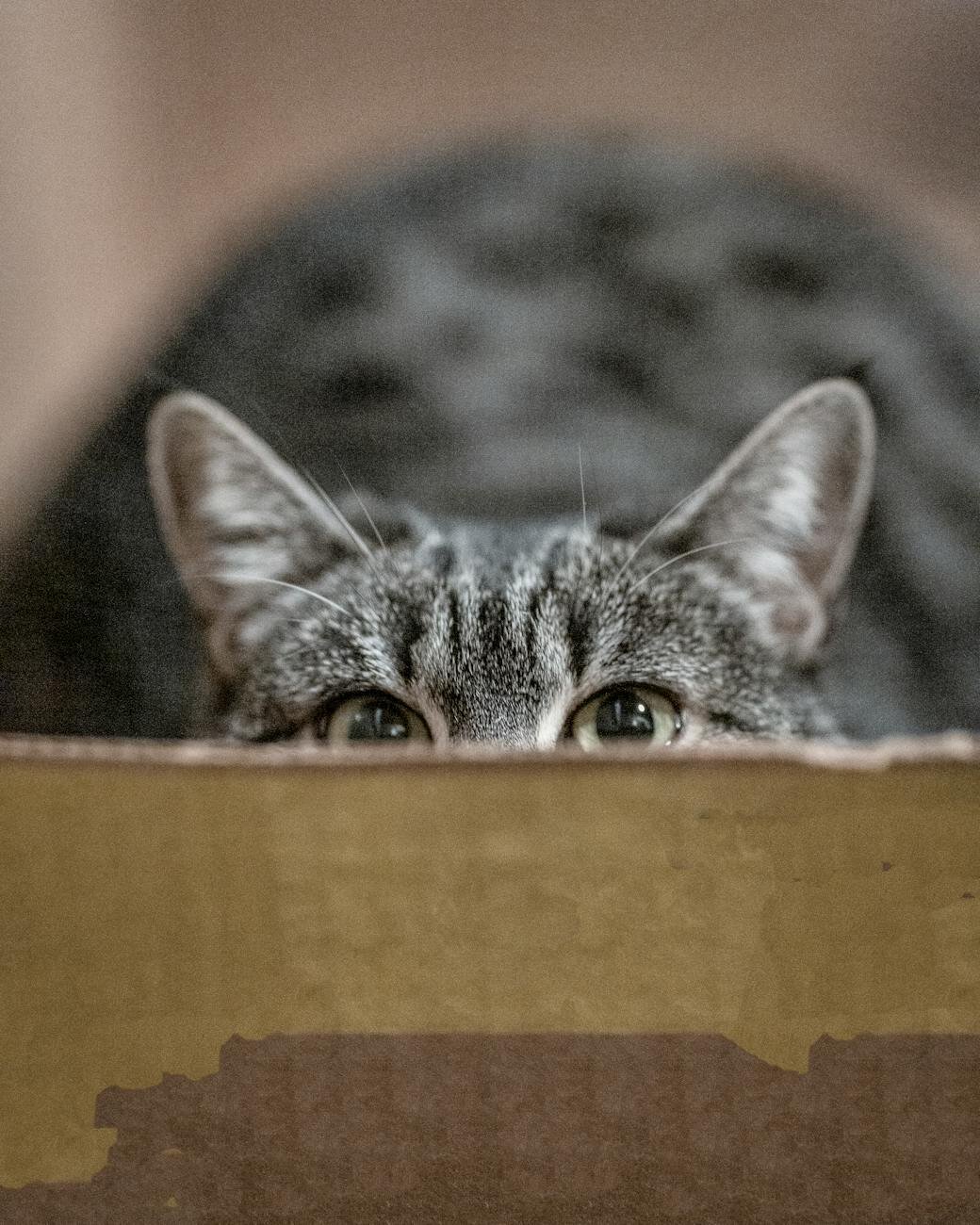
Labour in cats occurs in 3 phases:
Stage 1: Primary Labour
Stage 1 usually lasts for 12-36 hours. During this phase, her cervix begins to relax and oxytocin is released in her body which causes the uterus to contract. Due to the contractions, your cat may become restless and vocal. Some cats may also vomit during this stage.
You may notice nesting behaviour; where the female will seek out a safe 'den'-like space to settle into. Try to provide blankets and newspaper if you see this behaviour. Some females prefer to be alone in their nest, others may seek out the company of their owners.
Stage 2: Secondary Labour
Stage 2 is where birth of the kittens occur, and it may last anywhere from 1-5 hours, depending on how many kittens are in the litter. Generally a kitten should be born every 30-60 minutes. Labour consists of active straining and resting. You may wish to use a timer to keep track of the time between kittens to watch for any problems.
Watch for signs of dystocia (difficulty giving birth). If your cat is having strong contractions and straining for more than 60 minutes without birthing a kitten, she should be seen by a veterinarian as soon as possible.
As each kitten is born, it will first appear in its amniotic sac at the vulva. The mother will lick and chew until the sack is broken, and she will also eat the umbilical cord and amniotic sac contents. The mother should then lick and roll her newborn kitten, which stimulates breathing. This is completely normal behaviour, and your girl will know how rough to be with her kittens.
If your girl doesn't tend to her kitten within a minute of giving birth, you should ensure all the sack and membranes are removed from the kitten's mouth and wipe their little nose. You should also try to stimulate breathing by rubbing the kitten with a dry towel. Keep the kitten's head pointed downwards so that any fluid can drain out of the nose and mouth. If the umbilical cord has not broken, sever the connection around 3cm from the kitten's body, taking care not to pull the cord as this can cause damage to the kitten's organs.
If you need to separate the kittens from their mother, ensure they are kept warm at around 30-32oC.
Stage 3: Post-Birth
The final stage of labour involves the contraction of the uterus to discharge the placenta, fluid and excess membranes. For the first 48 hours after birth, the discharge is normally a green or black colour. The discharge should not have an excessive odour - if you are concerned always seek veterinary attention.
If you do not see the placenta pass, call your vet. Retained placenta is a condition that can lead to fever, infection, and serious illness.
In the days after giving birth
After the birth stage, your cat will be exhausted and looking to feed her babies. Provide her with clean blankets and a quiet, undisturbed environment free from loud noises. Some cats may become anxious or even aggressive while feeding their kittens, so it's best to respect her space and keep children away.
Vaginal discharge may last for 3 weeks after the kittens are born. This should appear as a reddish-black colour, as it is mostly old blood. If the discharge is overly bloody, looks like pus, or has a foul odour, your cat should be seen by a vet right away.
After giving birth, provide food ad libitum to your cat so that she can eat as much as she wants. Leave dry food out for her throughout the day, but remove any moist or canned food that doesn't get eaten after 30 minutes. Of course, fresh water should be provided at all times and close by.
Your cat may have green or black diarrhoea for a few days if she ate the foetal membranes at birth. This is normal and should resolve after a few days.
When to seek veterinary attention during labour
If you notice any of the following signs during labour, it's important to seek veterinary attention:
- A period of active pushing longer than 60 minutes which does not result in the birth of a kitten
- Pale gums
- Vulval discharge with a foul odour
- Seizures
Complications During Lactation
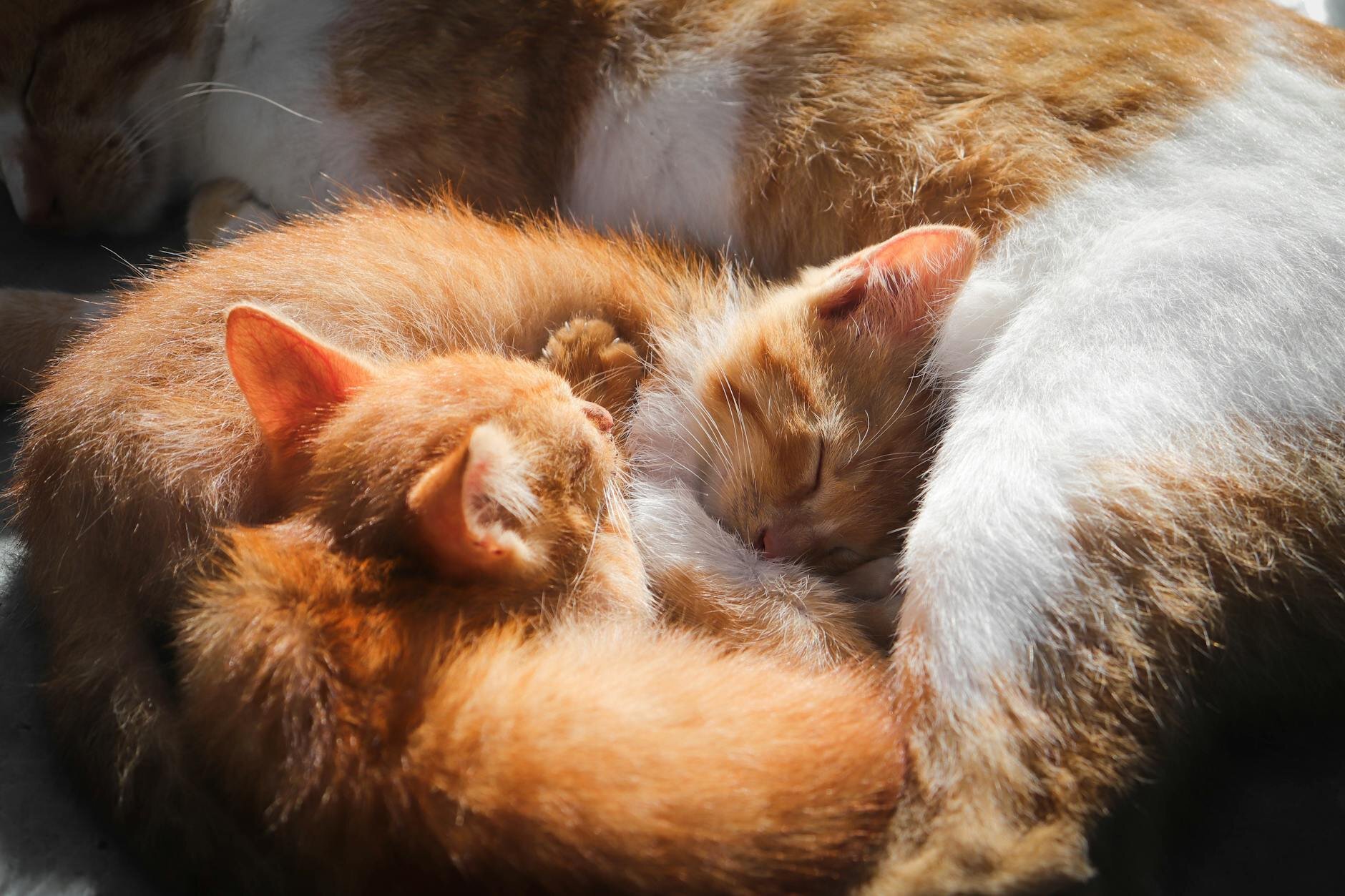
Problems to watch out for in nursing queens include:
1. Mastitis: infection of the mammary gland. Signs of mastitis include a swollen, hot, firm and painful teat. Often the affected teat/s will not produce milk, or may produce a thick discharge with blood clots. One or more teats may be affected, and you should not allow kittens to feed from any infected glands as they may become sick.
2. Pyometra or Metritis: an infected uterus or inflamed uterine lining, often caused by retained foetal membranes. Pyometra is a medical emergency and usually requires a hysterectomy (spay). Signs to watch out for include inappetence, fever, vomiting, or odourous vulval discharge.
3. Hypocalcaemia: also known as 'milk fever'. This can occur during pregnancy or lactation due to calcium lost from milk production. It is more common in cats nursing large litters. Signs of hypocalcaemia may include muscle tremors, hyperexcitation, panting, weakness, vomiting, or seizures. Hypocalcaemia requires calcium substitution via an IV drip. Low calcium can usually be avoided by feeding a high quality kitten food, however you may wish to provide extra kitten milk mixed in with your cat's food.
4. Agalactica: a lack of milk production. If your cat isn't producing any milk, you may notice excessive crying from the kittens and sunken bellies rather than nice plump little abdomens. Kittens will quickly become hypoglycaemic without milk for even just a few hours, so ensure supplementation with a kitten milk formula is provided immediately. A lack of milk production can indicate that the mother is debilitated or malnourished, so seek veterinary attention immediately if this is the case.
5. Poor Mothering: Not all cats will take to motherhood as naturally as others. Some cats may not show diligent mothering to their kittens and may not ensure all kittens are getting fed. Keep a close eye on feeding as you may need to take over and feed them if this is the case. Unfortunately, poor mothers tend not to develop a mothering instinct as they grow, so it is not ideal to breed from them again.
For more information, read through our Newborn Kitten Care Guide.
The journey of bringing new kittens into the world is remarkable. While it can seem daunting, understanding the key stages of pregnancy, birth, and lactation will empower you to provide excellent care. This guide provides the foundation, but a close relationship with your local vet is the most important tool you have to navigate this exciting time safely and welcome a healthy litter.
Further Reading
Want to read more? Check out our other articles:
Premium Pet Food: Is It Worth It?
History
Our experts continually monitor the health and wellness space and we update our articles when new information becomes available.
Wed 30 Nov 2022
Written by Dr Carla Paszkowski BVSc (Hons)Dr Carla Paszkowski BVSc (Hons)
Veterinarian
Dr. Carla graduated from the University of Queensland in 2013 with a Bachelor of Veterinary Science and worked for a number of years in small animal clinics across South East Queensland. While Carla enjoys most facets of clinical veterinary work, she holds a special passion for feline medicine, pocket pets, and nutrition.

